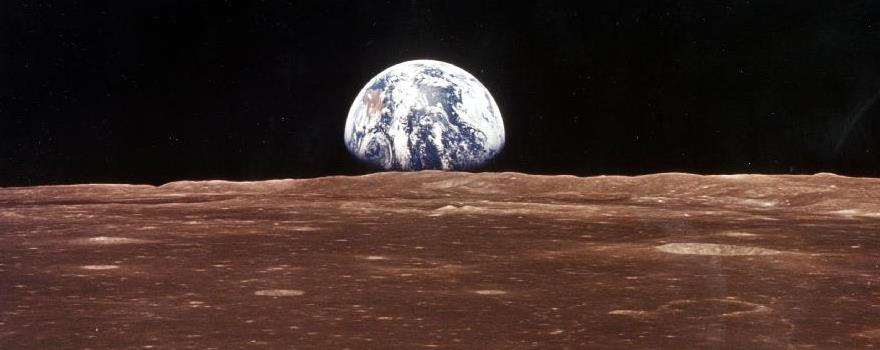
In science news this week: First reintroduced salmon return to California rivers in a critical step towards recovery; Hot and Cold: Dialing in on Temperatures for Winter-Run Salmon; Putting Nature on the Map (Literally); Delta Independent Science Board seeks comment on Interagency Ecological Program review; How much water do snowpacks hold? A better way to answer the question; Through smoke and fire, NASA searches for answers; The Benefits of Marine Protected Areas Spill into Neighboring Waters; House Attempts to Block Proposed Reorganization and Relocation of the U.S. Geological Survey; and more …
First reintroduced salmon return to California rivers in a critical step towards recovery: “California salmon reintroduced to their historic habitat as juveniles are, for the first time, returning to their home rivers to spawn. Their journey home demonstrates that fish reintroductions can successfully return Golden State salmon to restored rivers and streams in an important step toward their recovery. More than 25 threatened spring-run Chinook salmon have returned to the San Joaquin River so far this year, the first spring-run salmon to swim up the river in more than 65 years. On Battle Creek to the north, at least 50 endangered winter-run Chinook salmon reintroduced in 2018 have also returned — the first to return to the creek since dams built in the early 1900s blocked and damaged their habitat. … ” Read more from NOAA here: First reintroduced salmon return to California rivers in a critical step towards recovery
Hot and Cold: Dialing in on Temperatures for Winter-Run Salmon: “Of the four runs of Chinook salmon that inhabit the Central Valley, winter-run historically had the most daunting journey to reach their spawning grounds. These cold-loving fish traveled the farthest upstream to spawn in the chilly headwaters of the Sacramento Basin. The construction of dams throughout the watershed over the course of the past century, however, has cut winter-run off from the majority of their historic spawning areas. Today the run is listed as endangered under the Endangered Species Act, and exists only as a single population in the upper Sacramento River that depends on cold water released from Keswick Dam. Winter-run Chinook’s need for cool temperatures has meant recent catastrophic losses when temperatures got too high, but a few recent studies have altered our understanding of this species’ temperature tolerance. This new knowledge may allow water managers to actually release less cold water overall, while still improving winter-run survival. … ” Read more from FishBio here: Hot and Cold: Dialing in on Temperatures for Winter-Run Salmon
New technology could help salmon swim over hydroelectric dams: “A Seattle company called Whooshh Innovations has developed a creative way for fish to swim over hydroelectric dams. This product creates a pressure difference around the salmon, sucking the fish up a long tube and releasing it at the top of the dam. “We do introduce a little bit of water to keep them moist and keep their gills moist and all those kinds of things for the few seconds it takes them to get through the system,” said Mike Dearan, Whooshh’s chief engineer. ... ” Read more from KOMO here: New technology could help salmon swim over hydroelectric dams
Delta Independent Science Board seeks comment on Interagency Ecological Program review: “The Delta Independent Science Board (Delta ISB), which provides oversight of programs that support adaptive management, invites your feedback on its draft review of the Interagency Ecological Program (IEP). The IEP has been a central hub of science in the Sacramento-San Joaquin River Delta for decades, striving to provide “science, synthesis, and service” to Delta policymakers and managers. This review looks into the organizational and programmatic business of the IEP to produce science to inform Delta management. To read the Draft IEP Review, please click here. Written comments should be sent to disb@deltacouncil.ca.gov by July 26, 2019.”
Putting Nature on the Map (Literally): “The world is facing rapid population growth, and with that, rapid habitat loss. But do these trends need to go hand in hand? In California, The Nature Conservancy is betting that giving nature a seat at the table during land use planning processes can disrupt this unsustainable pattern. By 2050, California is going to need to make room for 10 million more people, along with the housing, transportation, and energy infrastructure needed to accommodate that growth. Unfortunately, in the past, our state’s track record for accommodating growth hasn’t been great. … ” Read more from the Cool Green Science blog here: Putting Nature on the Map (Literally)
In best-case reforestation scenario, trees could remove most of the carbon humans have added to the atmosphere: “If a tree falls in the forest, but someone sticks around to replant it, does it still make an impact in the fight against climate change? The answer, it seems, is yes. And, according to new research published today in the journal Science, that’s exactly the tack we humans should take. The study, which presents a global map of degraded lands that could naturally support new trees, suggests that the best case scenario for forest restoration would remove more than 200 billion tons of carbon from the atmosphere—enough to single-handedly offset two decades worth of global emissions produced at the current rate. … ” Read more from NOVA here: In best-case reforestation scenario, trees could remove most of the carbon humans have added to the atmosphere
Trees Alone Can’t Save Us From Climate Change: “Earlier this month, a group of European researchers published a study announcing that we already have the technology to tackle climate change: trees. The study, published in the journal Science, identified 1.7 to 1.8 billion hectares, or roughly 6.5 million square miles, of suitable land around the world not currently being used for agriculture or urban development that could be planted as forest (defined as land with at least 10 percent tree cover). … But other ecologists and scientists aren’t as convinced. Researchers are only now beginning to understand how carbon cycles through the life span of forests, and reforestation is a process with many technical and political variables. … ” Read more from Sierra Magazine here: Trees Alone Can’t Save Us From Climate Change
Joshua trees facing extinction: “They outlived mammoths and saber-toothed tigers. But without dramatic action to reduce climate change, new research shows Joshua trees won’t survive much past this century. UC Riverside scientists wanted to verify earlier studies predicting global warming’s deadly effect on the namesake trees that millions flock to see every year in Joshua Tree National Park. They also wanted to learn whether the trees are already in trouble. ... ” Read more from Science Daily here: Joshua trees facing extinction
How much water do snowpacks hold? A better way to answer the question: “Oregon State University researchers have developed a new computer model for calculating the water content of snowpacks, providing an important tool for water resource managers and avalanche forecasters as well as scientists. “In many places around the world, snow is a critical component of the hydrological cycle,” said OSU civil engineering professor David Hill. “Directly measuring snow-water equivalent is difficult and expensive and can’t be done everywhere. But information about snow depth is much easier to get, so our model, which more accurately estimates snow-water equivalent from snow depth than earlier models, is a big step forward.” … ” Read more from Science Daily here: How much water do snowpacks hold? A better way to answer the question
Through smoke and fire, NASA searches for answers: “NASA satellites reveal a world marked by fire: a global patchwork of flame and smoke driven by the seasons and people. Summer wildfires rage across the western United States and Canada, Australia and Europe. In early spring, agricultural fires blanket the breadbasket regions of Southeast Asia as they do throughout the dry season in central and southern Africa and Brazil. For years, NASA has used the vantage point of space, combined with airborne and ground-based field campaigns, to decipher the impact of fires—from first spark to final puff of smoldering smoke— and help other agencies protect life and property. But the effects of fires linger long after they’re extinguished … ” Read more from NASA here: Through smoke and fire, NASA searches for answers
The Benefits of Marine Protected Areas Spill into Neighboring Waters: “When California implemented a string of marine protected areas (MPAs) about a decade ago, one of its goals was to bolster the number of fish available to recreational and commercial fishers. The state created a network of protected reserves, occupying about 18 percent of the state’s waters, that are close enough together that fish born in one no-fishing area can readily relocate to another reserve or adjacent waters where fishing remains legal. Known as the spillover effect, this long-assumed consequence of marine protected areas has proven incredibly difficult to verify. … ” Read more from Hakai Magazine here: The Benefits of Marine Protected Areas Spill into Neighboring Waters
Pharmaceutical and Personal Care Products Alter Lake Food Webs: “We don’t always think about them much, but the little critters in the food chain are extremely important in keeping our world running. In aquatic systems, these little creatures are often phytoplankton – microscopic algae that are the base food source for all other organisms. Any disruption to that food source could spell trouble for an entire aquatic ecosystem. As a result, some researchers have turned their attention to understanding how emerging contaminants like Pharmaceutical and Personal Care Products affect phytoplankton communities. ... ” Read more from EnviroBites here: Pharmaceutical and Personal Care Products Alter Lake Food Webs
Stronger earthquakes can be induced by wastewater injected deep underground: “Virginia Tech scientists have found that in regions where oilfield wastewater disposal is widespread — and where injected water has a higher density than deep naturally occurring fluids — earthquakes are getting deeper at the same rate as the wastewater sinks. Perhaps more critically, the research team of geoscientists found that the percentage of high-magnitude earthquakes increases with depth, and may create — although fewer in number — greater magnitude earthquakes years after injection rates decline or stop altogether. ... ” Read more from Science Daily here: Stronger earthquakes can be induced by wastewater injected deep underground
House Attempts to Block Proposed Reorganization and Relocation of the U.S. Geological Survey: “On 25 June 2019, the House passed the fiscal year (FY) 2020 Interior, Environment, and Related Agencies appropriations bill as part of a five-bill minibus, H.R. 3055. The bill would increase funding for the U.S. Geological Survey (USGS) over FY2019 levels and the Administration’s budget request. The bill also includes report language that prohibits the proposed reorganization and blocks an attempt to relocate staff of the USGS away from the Washington, D.C. area. … ” Read more from the Geological Society of America here: House Attempts to Block Proposed Reorganization and Relocation of the U.S. Geological Survey
Maven’s XKCD Comic Pick of the Week …

 Sign up for daily email service and you’ll never miss a post!
Sign up for daily email service and you’ll never miss a post!
Sign up for daily emails and get all the Notebook’s aggregated and original water news content delivered to your email box by 9AM. Breaking news alerts, too. Sign me up!
About Science News and Reports: This weekly feature, posted every Thursday, is a collection of the latest scientific research and reports with a focus on relevant issues to the Delta and to California water, although other issues such as climate change are sometimes included. Do you have an item to be included here? Submissions of relevant research and other materials is welcome. Email Maven

